A large building just down the road from Russell Square tube station is notable for both its monumental design, but also a series of plaques that line the walls.
This is International Hall, and it’s student accommodation for pupils at the University of London. The building is known as an intercollegiate hall, as it includes students from across several of the University’s different colleges, but as it’s name suggests, does tend to cater to students visiting from overseas.
This particular building was established in 1962 with funding contributions from overseas – mainly Commonwealth countries and has always had at least 50% of the rooms for overseas students.
The hall was formally opened on 23rd October 1962, although students had been living in the building since April. The formal opening was by Mrs Vijaya Lakshmi Pandit, the former High Commissioner for India, along with representatives from the 21 countries that gave financial support for the building.
It was described in the opening speech as an “important contribution to the cause of international friendship and understanding”.
Today the commemorative plaque is freestanding, but at the time of the unveiling, it was mounted into the wall, so it was moved at some point, probably at the turn of the century when the building was given a major refurbishment.
What hasn’t changed though are a series of plaques dotted around the northern side of the building, showing the Coats of Arms and emblems of the nations that contributed to the cost of the building – mostly, but not exclusively, Commonwealth nations.
Fortunately, they also state the name of the country, to save much head scratching as to which belongs to who.
There is one that lacks a name though, and that’s the UK — presumably as we should instantly recognise it?
That does though mean that they still show the country names as they were in the early 1960s — so Malaya is here, although today that’s roughly Singapore and part of Malaysia. Also, some of the emblems and coats of arms have changed, so Sudan dropped the Rhino in 1970, Barbados changed theirs from a woman riding horses in an ocean to a more conventional design in 1966, and Uganda’s changed in 1962, when the country gained independence from the UK.
One I wasn’t aware of is the Windward Islands, which is actually a grouping of several countries, Dominica, Grenada, Martinique, Saint Lucia, and finally, Saint Vincent and the Grenadines.
In a way, it’s (mostly) a history of colonialism preserved on the walls of a London university building, and something worth taking a look at, although I’d probably recommend looking up the emblems on your smartphone to see how they’ve changed since they were put there in the 1960s.
International Hall is next to Brunswick Square Gardens, in Bloomsbury.

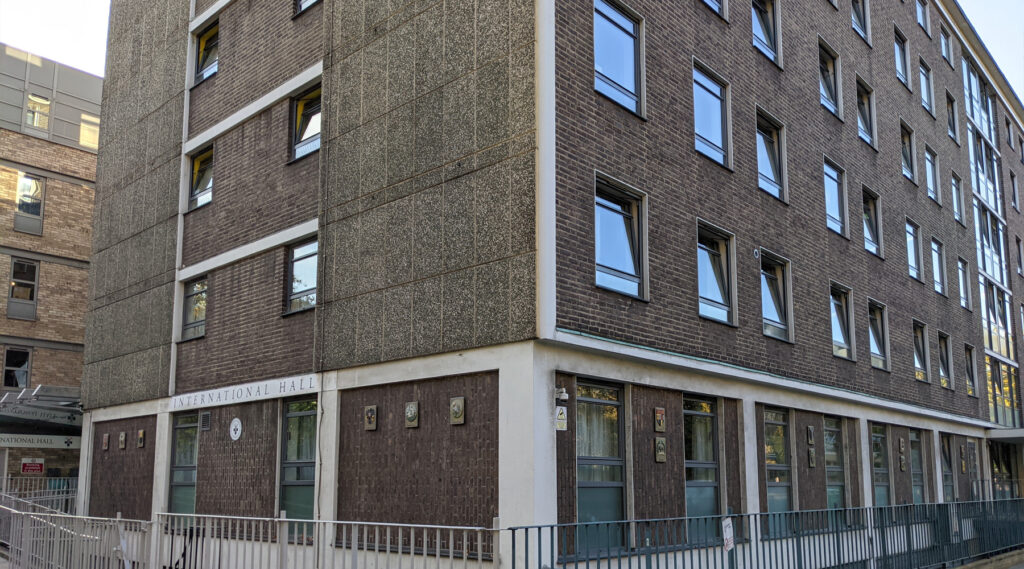
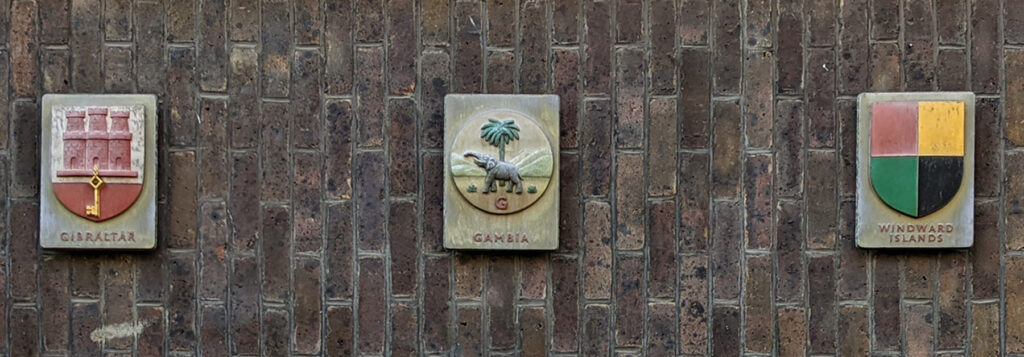
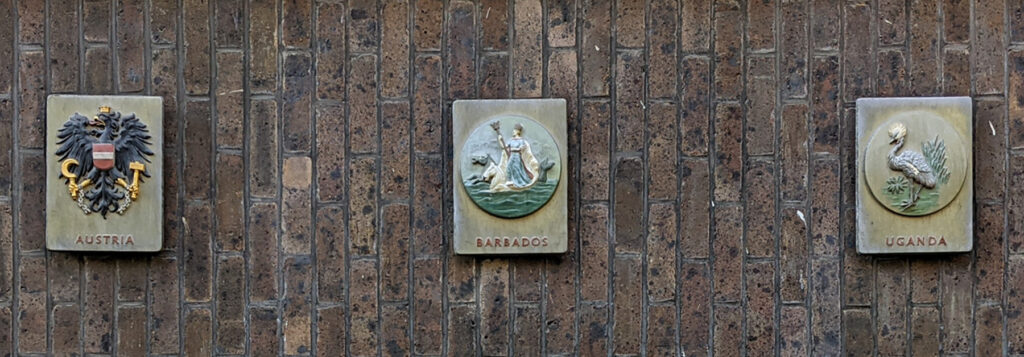
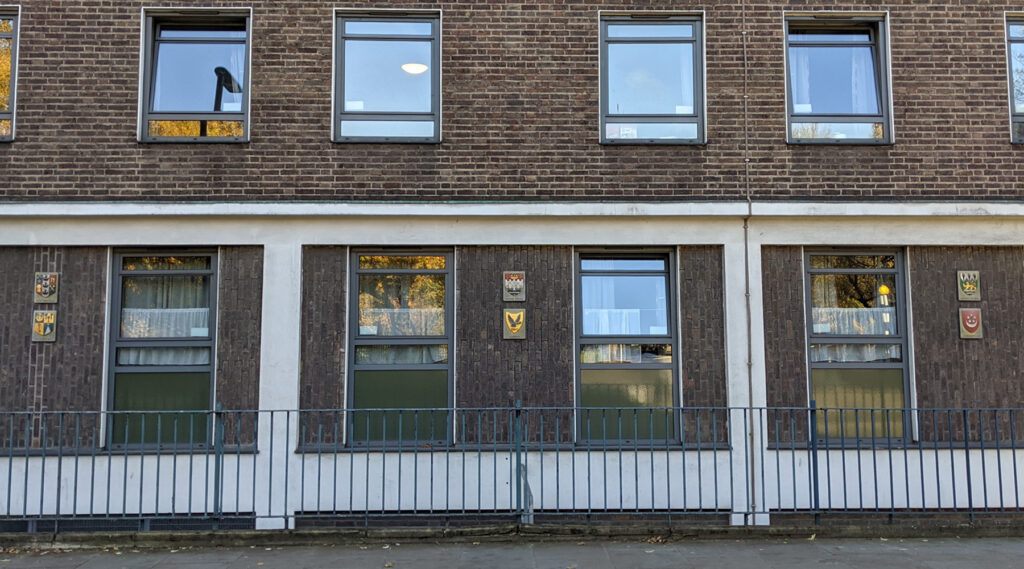
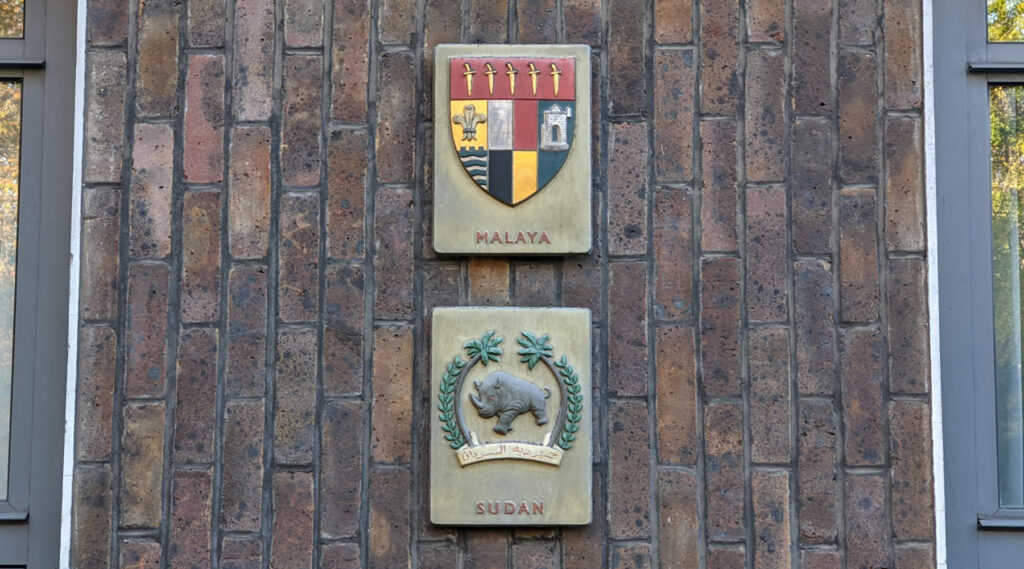
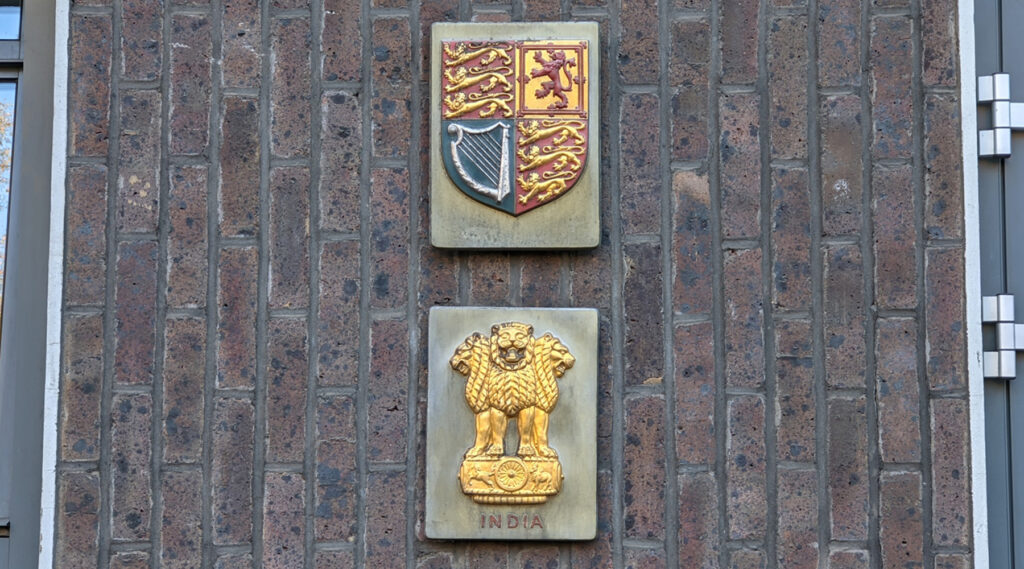
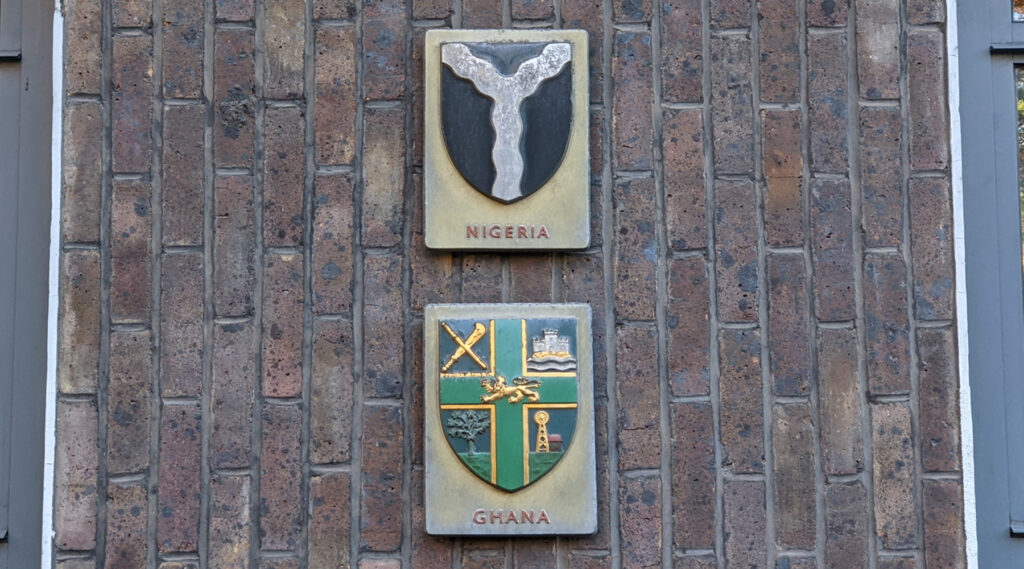
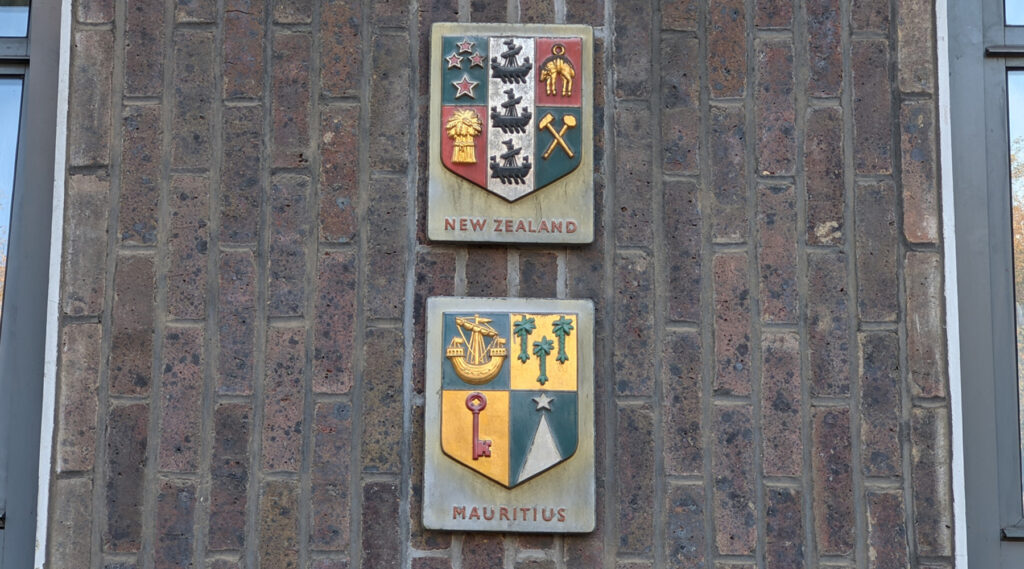






Malaya didnt include Singapore – the SI was added to Malaya to make MalaySIa to incorporate the city. However relations deteriorated and Singapore became the first modern country to become independent unwillingly as it was booted out of Malaysia for not enacted pro-Malay rules.